Clematis are graceful and very beautiful vines, so supports for clematis should be just as decorative and attractive. In summer cottages, a wide variety of types of such supports are used. Starting from expensive pergolas and ending with trellises made literally “from what was available.”
Homemade supports are more common than purchased ones, which are not only expensive, but also more flimsy and unreliable.If you get down to business with your imagination, you can make very nice ladders for clematis with your own hands. As samples, let's look at different options, both expensive and practically free.
Clematis supports made of wood
It is not entirely correct to call such a luxurious pergola a support for clematis. Rather, on the contrary, clematis and roses complement and decorate the pergola.
Regardless of the season, pergolas always add a special charm to our gardens.
You just need to think carefully about the design and choose a suitable place for them. This is sometimes crucial.
Spend a little time to decide in what style all these decorative designs should be made. They should be combined with the surrounding buildings and fit into the overall design of the garden.
A window covered with clematis looks homely and cozy. Two bushes planted under the window will easily entwine it along the attached supports.
When making wooden slatted supports for clematis, the “cage” or “diamond” pattern is most often used. A lattice knocked down in this way and mounted on a wall or fence looks very impressive.
Any barn can be improved in this original way. All you need to do is cut brushwood, weave an improvised fence and plant clematis.
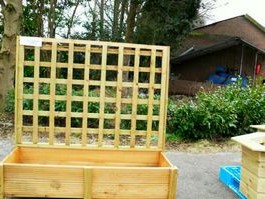 |
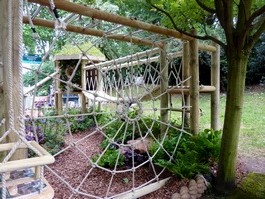 |
Supports in the form of flat gratings are easy to make and relatively cheap, so they are often used. These designs can also be combined. A wooden frame is sometimes strung with rope or fishing line, which significantly reduces the cost of the entire project.
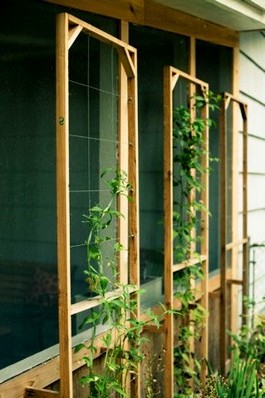 |
 |
They can be either free-standing or mounted on a wall or fence. Such supports are relatively easy to move to another location
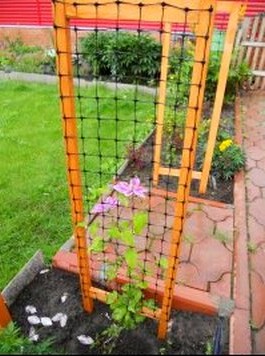 |
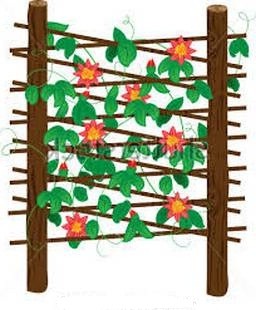 |
Note the support on the right. It is extremely simple and equally original.Slats are nailed to two posts at a certain angle. If the slats were nailed horizontally, everything would be trivial. This suggests that one small detail can radically change the entire design.
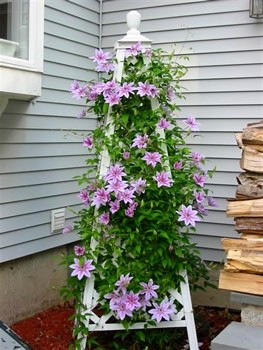 |
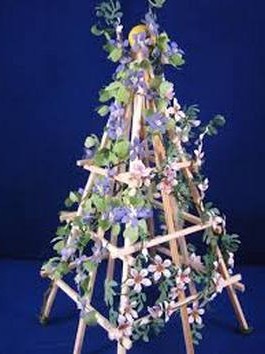 |
In addition to trellises, supports - tripods - are used as supports for clematis. They are also called obelisks. These structures are very functional and serve as decorative, vertical elements that can be focal points in the garden.
Iron supports for clematis
The most impressive iron supports for clematis are arches. Unfortunately, the legs of store-bought arches are often weak and they sway in the wind. To strengthen the base of such supports, metal rods are driven into the ground and the legs of the arches are attached to them with wire.
 |
 |
Small-flowered varieties of clematis are more suitable for planting near arches; they are taller. We can recommend clematis Manchurian, it is not covered, fast-growing, unpretentious.
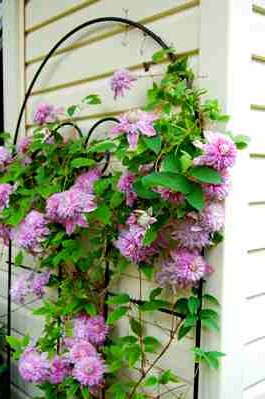 |
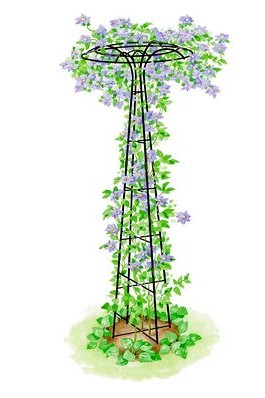 |
In addition to arches, the same supports are made from metal rods as from wood, i.e. flat gratings and supports - tripods. If you have a welding machine and a little experience, all these structures can be made independently. When manufacturing them, it is not necessary to perform small and complex parts. They only complicate the work, and you still can’t see them under the leaves. From a rod with a diameter of 10 mm. You can make small tripods and arches. It is more profitable to buy car paint for painting. It is more expensive, but will last for several years, and the usual one will peel off in one year.
The simplest options for supports for clematis
Clematis holds its leaves for support. The sheet will not be able to catch on a rod with a diameter of more than 15 mm.The shoots have to be tied to wooden slatted trellises.
At first glance, iron structures are more convenient. Both their uprights and transverse parts are made of thin rods; the vine clings to them and is easily braided. It is braided so intricately that it is very difficult to remove it in the fall without breaking it. You have to cut off each leaf with scissors.
Cunning summer residents have a simple, cheap option that also saves time. A regular fishing line can be used as a support for clematis.
If the bush is planted against a wall or fence, several hooks are stuck into the ground at the base of the bush. The lower end of the fishing line is tied to the hooks, and the upper end to a nail driven into the fence, or to some kind of crossbar.
The fishing lines can be stretched parallel, with rays to the sides, just do not make transverse threads, do not knit a net - only from top to bottom. Clematis shoots weave around the fishing line well and do not slip off it.
In the fall, we cut the line and the bush falls to the ground. In the spring, the fishing line is easy to pull out and replace, and you can use it for several years without changing it.
In a similar way, supports are made that look like green columns. In this case, you will need a solid base, a metal stand, and a pipe. The stand is buried 60 - 70 cm into the ground, and a hoop is attached to the top. Several rows of fishing line or green cord are stretched from the hoop to the ground.
Clematis entwines this structure and it turns out to be a real flowering column. You can do without a hoop, then the column will be cone-shaped. Such columns are extremely impressive, but they should not be abused. Putting such exclamation marks all over the garden can ruin the whole picture.
Do not place high stands; the plant should grow higher than the support and form a cap of flowers at the top. If the upper part of the structure is not closed, then the decorative element looks unfinished.
As you can see, a little imagination and supports for clematis can be made without much expense, and they will look quite nice and original.
In this video you can see other original supports for climbing flowers:
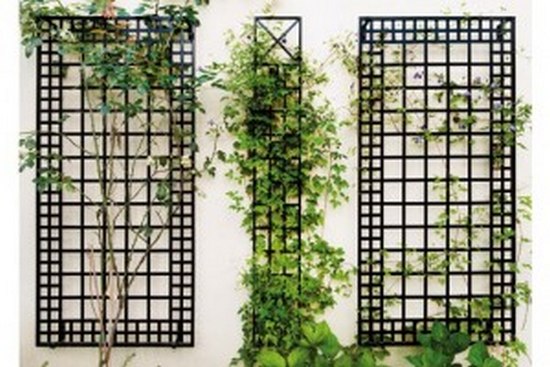
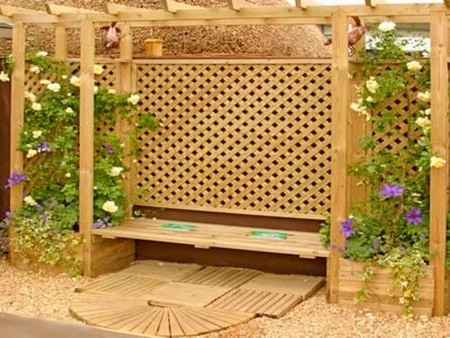
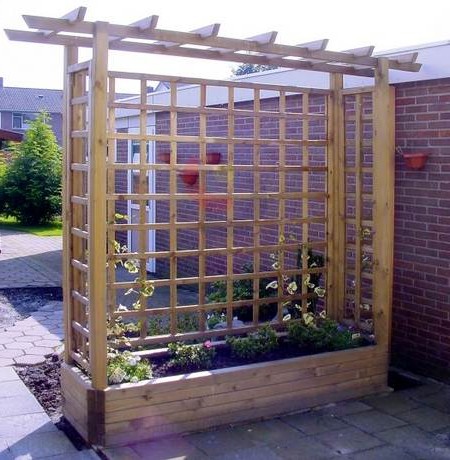
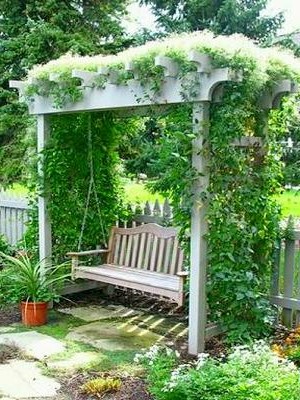
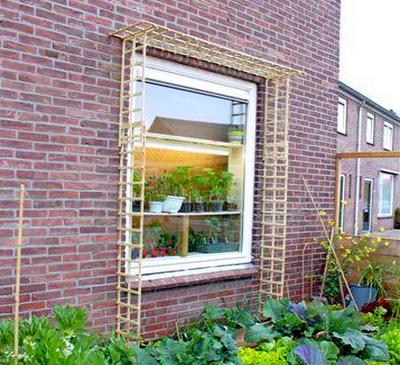
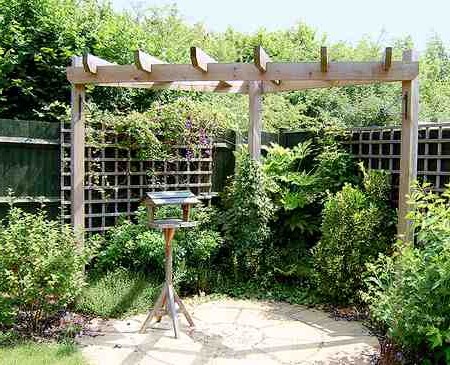
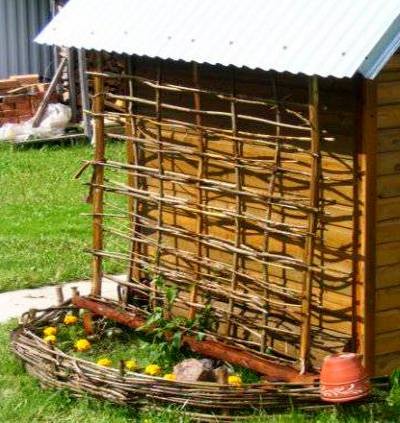
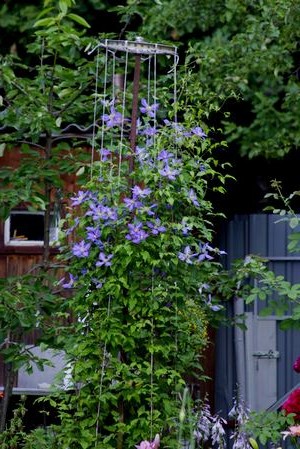

 (32 ratings, average: 4,72 out of 5)
(32 ratings, average: 4,72 out of 5) CUCUMBERS NEVER GET SICK, I'VE BEEN USING ONLY THIS FOR 40 YEARS! I SHARE A SECRET WITH YOU, CUCUMBERS ARE LIKE THE PICTURE!
CUCUMBERS NEVER GET SICK, I'VE BEEN USING ONLY THIS FOR 40 YEARS! I SHARE A SECRET WITH YOU, CUCUMBERS ARE LIKE THE PICTURE! You can dig a bucket of potatoes from each bush. Do you think these are fairy tales? Watch the video
You can dig a bucket of potatoes from each bush. Do you think these are fairy tales? Watch the video
 How our fellow gardeners work in Korea. There is a lot to learn and just fun to watch.
How our fellow gardeners work in Korea. There is a lot to learn and just fun to watch. Eye trainer. The author claims that with daily viewing, vision is restored. They don't charge money for views.
Eye trainer. The author claims that with daily viewing, vision is restored. They don't charge money for views. A 3-ingredient cake recipe in 30 minutes is better than Napoleon. Simple and very tasty.
A 3-ingredient cake recipe in 30 minutes is better than Napoleon. Simple and very tasty. Therapeutic exercises for cervical osteochondrosis. A complete set of exercises.
Therapeutic exercises for cervical osteochondrosis. A complete set of exercises. Which indoor plants match your zodiac sign?
Which indoor plants match your zodiac sign? What about them? Excursion to German dachas.
What about them? Excursion to German dachas.
Thank you for the wonderful article. Suitable for all curly haired people.
Natalia, I am very glad that you liked this article. Come visit us more often, I hope you will find many more interesting things for yourself.
I also liked the article, everything is written clearly and accessible. Thank you.
And thank you very much for your high appreciation of my humble work.
Somehow I’m not sure that the clematis shoots will stay on the fishing line. Is this really your experience or just something you read somewhere.
Konstantin, yes, this is my experience. We have several of these supports with fishing lines in our garden and the clematis holds on to them perfectly. You can rest assured and implement this in your area.
Wonderful mesh supports at FixPries.